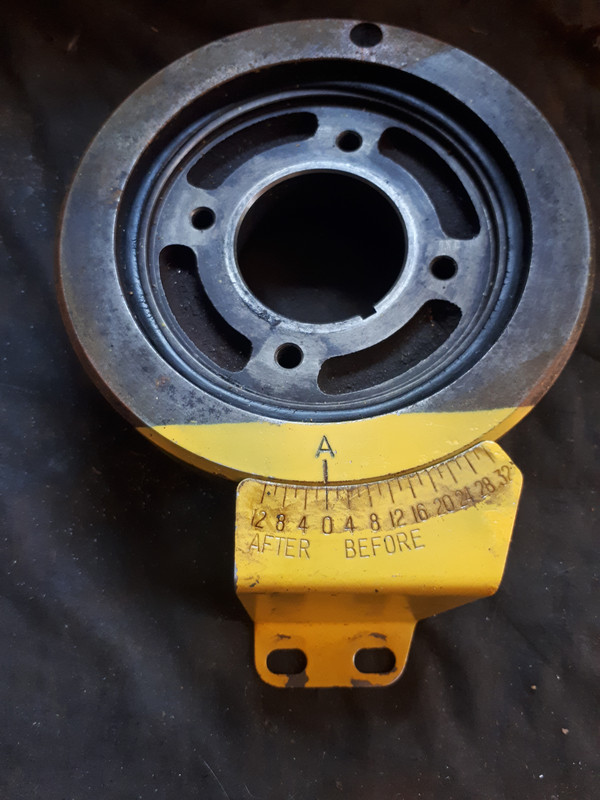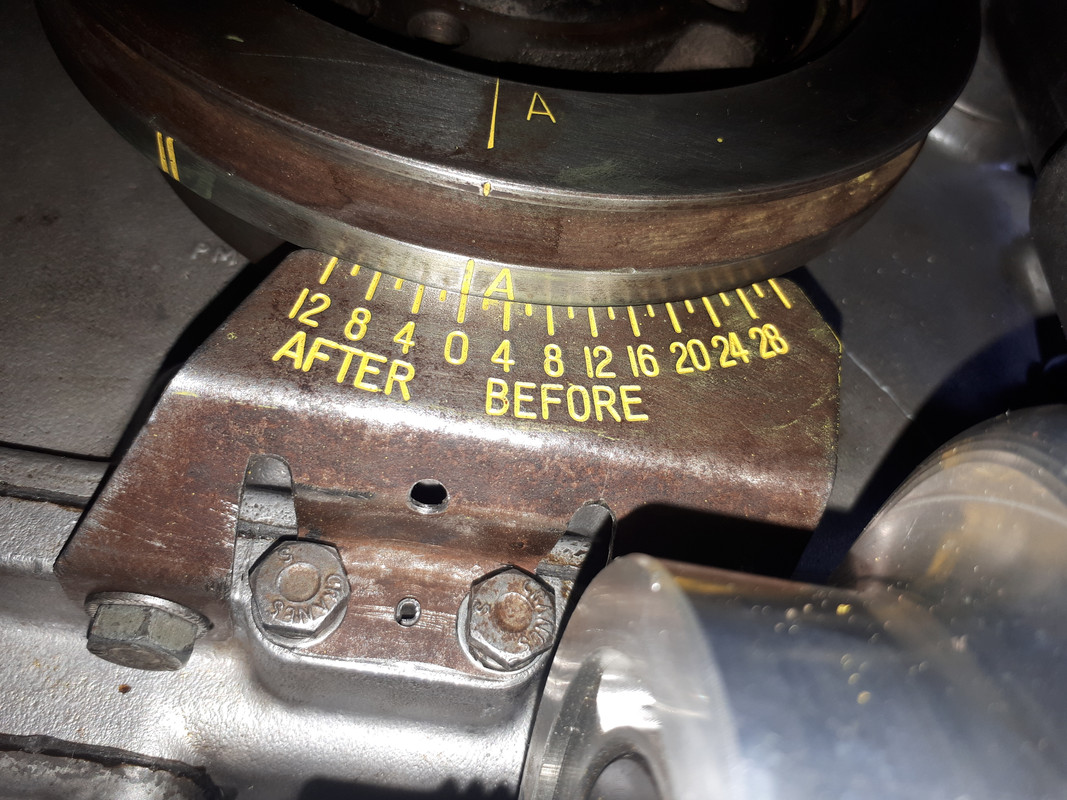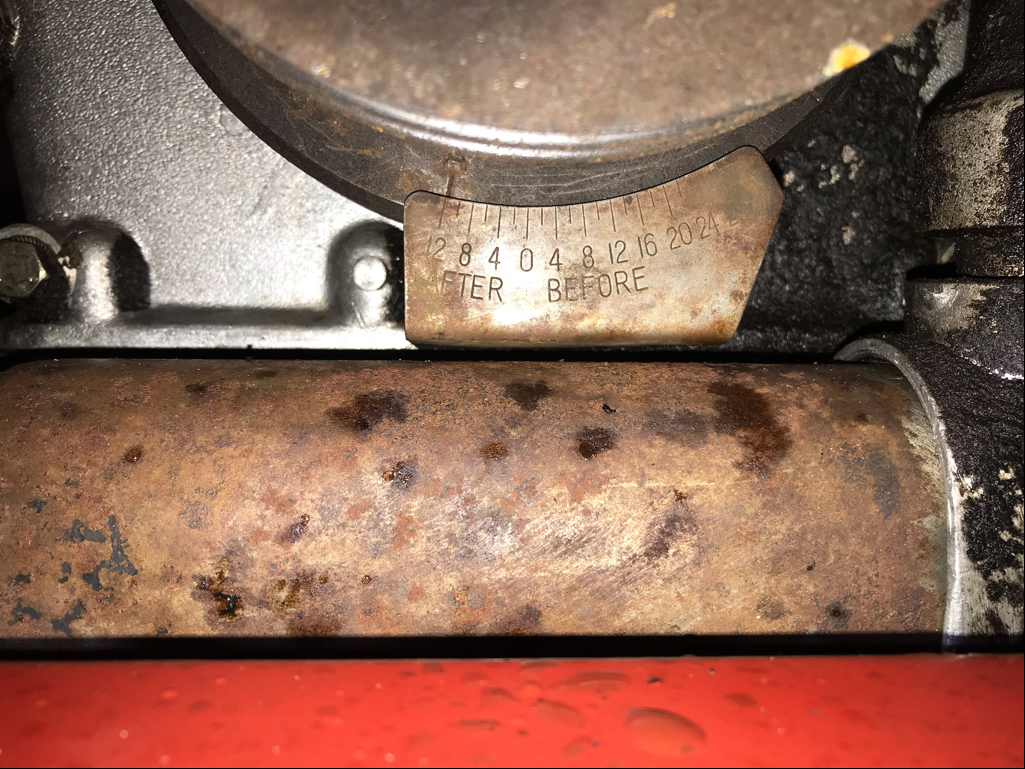On either bank, when pistons 1 (and 6) are at TDC, all the other pistons (2,3,4,5) are at the same level., 75% of stroke below TDC.
I note 2nd photo clearly shows Sven’s harmonic balancer and timing plate are original. I swapped mine for XJ12S3 and for posterity I can report these differences, not Sven’s problem, just related topic:
Below is pic of my removed OEM balancer and timing plate. Note the chamfer around the front edge of the balancer and how the timing plate sits in this chamfer so that front faces of the balancer and the plate are flush, the timing marks are accurate only when the plate is in this position, also less parallel reading error.

Below is pic of the xjs3 balancer and timing plate that I have fitted to my car (plate modified to use both the e-type and xj12 mountings). Marek’s photo is of the same balancer. There is no chamfer on the front edge. There is timing mark on the front face (same as the e-type) that stops where the chamfer would have started, i.e. at the correct position (radius) that the edge of the e-type style of timing plate would need to be, for it to be accurate. There is also a timing mark on the perimeter face of the xjs3 balancer, this is the one that the xjs3 timing plate aligns with. Because it picks up the perimeter radius, not some smaller, inner chamfer radius, the scaling of the xjs3 timing plate is larger, full scale (12+32 deg.) length is 5 mm longer than the e-type plate. All this means, if the timing plate is not correct for the balancer, or if the plate is not correctly aligned, even when correctly set to TDC, the error could be up to 8%.









